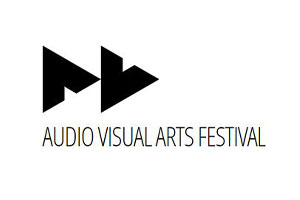Speaker(s): Bill Kapralos, University of Ontario Institute of Technology, Oshawa, Ontario, Canada
Date & Time: 17/05/2016 12:00-15:00
Location: AVARTS Secretariat Building, Room 4, Former Asylum
Language: English
As in the real world, sound plays a vital role in the communication of information in computer applications and entertainment, such as office application software and video games. In human‐computer interfaces, sound can convey alarms, warnings, messages, and status information (such as an incoming email, an error, or a critical battery alarm) (Buxton, 1990). In interactive applications such as virtual environments and simulations, auditory cues can help a user to orient themselves, add a better sense of presence or immersion, compensate for poor visual cues (graphics), and at the very least, add a pleasing quality to the simulation (Shilling and Shinn‐ Cunningham, 2002). Sound in entertainment applications such as video games has many important functions: It can help to communicate important information to the player (“quick!‐‐take out your weapon, there's an enemy around the corner!”); it can serve as a sound symbol or leitmotif; it can help to situate the player in a specific location; it reduces learning curves and creates a sense of realism (see Collins (2008) for greater details). Foley sound effects associated with particular visual imagery (such as footsteps, a door opening, glass breaking, a ball bouncing, etc.) can be added in the post‐production of animations (Doel et al., 2001), film and video games, leading to a greater sense of presence, realism and quality (Doel et al., 2001). Sound also plays an emotional role that helps to immerse the player in media, to emotionally invest them in a narrative. It is often said in the audio/entertainment industry that ``sound is emotion'' and a visual display without a properly designed audio component will be “emotionally flat”.
Although sound is a critical element in perceiving our environment, it is often overlooked in interactive applications such as software, video games and virtual environments, where, historically, emphasis has been placed on vision (Carlile, 1996). Although the most common form of human computer interaction is visual‐based, recently there has been growing interest in exploiting other modes of interaction for a number of reasons including (Frauenberger et al., 2004): i) the content of interfaces is now growing and becoming more complex making it difficult to express only visually; ii) in many applications, visuals are restricted by the user's mobility, form factors, or by being employed to other tasks; and iii) given our reliance on computers access should be available to all members of society, including the visually impaired who cannot make use of visual displays. Fortunately, there is a growing effort to include those with disabilities of all types including visual impairment, thanks in part to new laws in many countries addressing the rights of the disabled and accessibility. The majority of the visually impaired rely on, and are well practiced with the use of hearing to gather information about their surroundings (Cooper and Petrie, 2004). As a result, audio‐based interfaces are a natural substitution to vision and in fact, this is often exploited in many of the user interacts for the visually impaired (Cooper and Petrie, 2004).
The first half of this tutorial will provide an overview of sound and spatial sound followed by a description of sound design for video games. The second part of the tutorial will include a “hands‐on” component that will reinforce the concepts covered in the first part of the tutorial by providing attendees the opportunity to record, post‐ process, and incorporate sound (background sound and sound effects) into a visual scene (a game‐trailer video).
Back to workshops


 Detailed description: An Overview of Game Sound
Detailed description: An Overview of Game Sound



